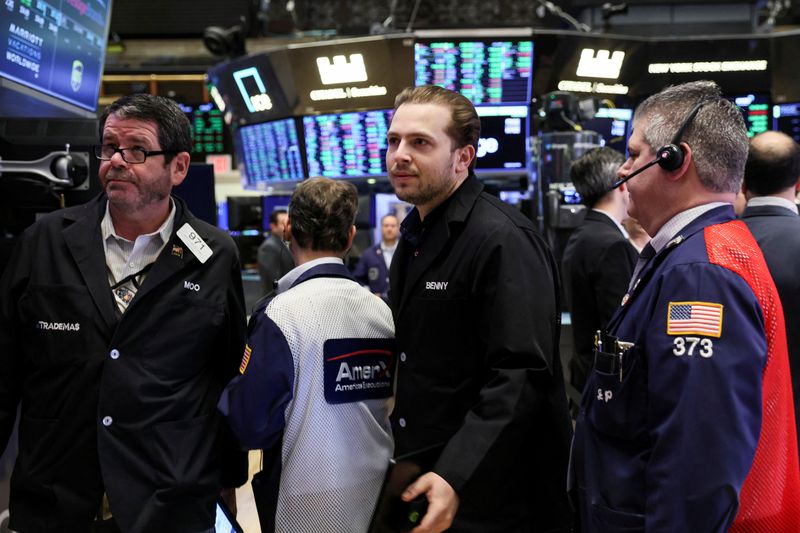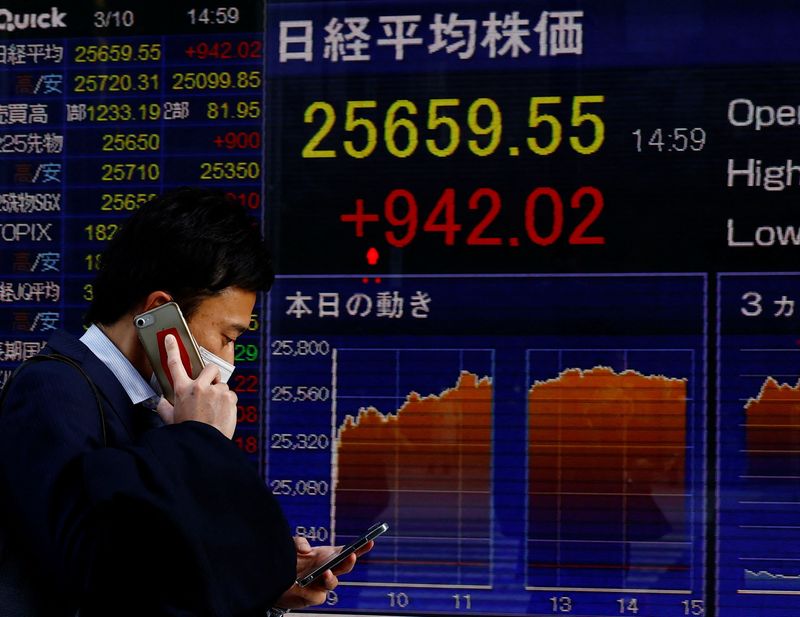By Caroline Valetkevitch
NEW YORK (Reuters) - The U.S. Treasury 10-year yield hit a three-year high above 2.7% on Friday while the U.S. dollar index posted its largest weekly percentage gain in a month, helped by the prospect of more aggressive Federal Reserve tightening.
On Wall Street, the S&P 500 and Nasdaq ended lower in choppy trade as investors assessed the economic outlook with the Fed moving to fight inflation.
This week's release of minutes from the Fed's March meeting showed "many" officials were prepared to raise rates in 50-basis-point increments in coming months.
The dollar index advanced to 100 for the first time in nearly two years. It rose as high as 100.19, its highest since May 2020. It was last little changed on the day at 99.822, and up 1.3% on the week.
As the dollar has gained in recent weeks, the euro has been pressured by a tightening election race in France, the euro zone's second-biggest economy, between President Emmanuel Macron and far-right candidate Marine Le Pen. Macron is still ahead in polls.
The euro dropped for the seventh straight session to a one-month low of $1.0837. It last changed hands at $1.0853, down 0.3% on the day.
"The dollar's latest pop is the culmination of bullish factors ranging from geopolitical risk, election uncertainty in France, and the Fed's increasingly hawkish outlook for interest rates," said Joe Manimbo, senior market analyst at Western Union (NYSE:WU) Business Solutions in Washington.
In Treasuries, the 10-year yield hit 2.73%, its highest since March 2019, and the yield on 10-year inflation-protected securities went within 15 basis points of turning positive for the first time in over two years.
The yield on 10-year Treasury notes was up 5.2 basis points to 2.706% while the 2-year note yield was up 5.8 basis points at 2.520%, leaving the 2/10 spread at 18.41 basis points.
The Dow Jones Industrial Average rose 137.55 points, or 0.4%, to 34,721.12, the S&P 500 lost 11.93 points, or 0.27%, to 4,488.28 and the Nasdaq Composite dropped 186.30 points, or 1.34%, to 13,711.00.
The pan-European STOXX 600 index rose 1.31% and MSCI's gauge of stocks across the globe shed 0.04%. (Graphic: World stocks - https://fingfx.thomsonreuters.com/gfx/mkt/byprjbamope/Global%20markets.PNG)
French presidential election risk was also evident in bond markets as French borrowing costs rose while yields of other core European government bonds fell.
In the energy market, oil prices rose 2% on the day, but registered their second straight weekly decline.

Member nations of the International Energy Agency (IEA) will release 60 million barrels over the next six months, with the United States matching that amount as part of its 180 million barrel release announced in March.
Brent crude futures settled up $2.20, or 2.19%, at $102.78 a barrel. U.S. West Texas Intermediate (WTI) crude futures rose $2.23 to $98.26.
